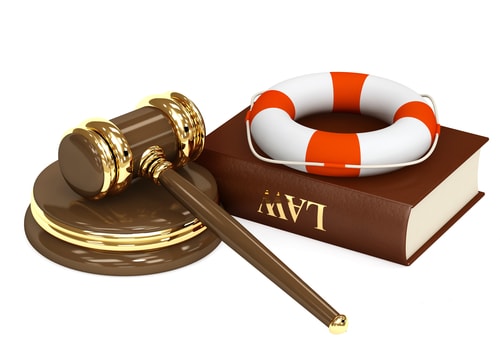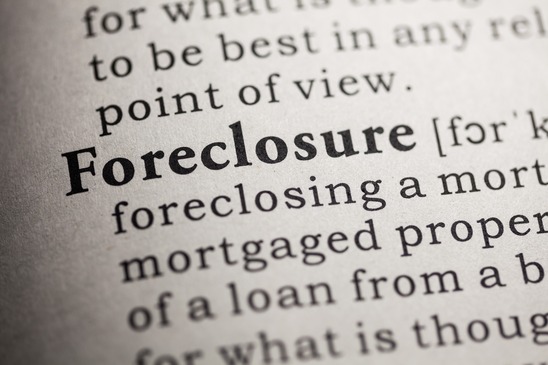
¿Qué hago después de la indulgencia en Nueva York?
Durante la pandemia de Covid 19, muchos propietarios experimentaron una reducción en los ingresos debido a la pérdida del trabajo, la reducción del salario, la

Chapter 13 bankruptcy is commonly pursued when homeowners are behind on their mortgage and they want to retain their home. Many of these debtors are already even in foreclosure. A Chapter 13 filing can stop a foreclosure lawsuit (including a scheduled sale date) and enable debtors to repay their past due mortgage payments over a three to five-year payment plan that is interest-free. Lenders cannot turn down the Chapter 13 payments, rather they must accept the monies toward repayment of the amounts owed on the mortgage. Additionally, the Bankruptcy Court usually offers a loss mitigation program to encourage home retention that enables homeowners to apply for and potentially obtain a loan modification. A successful loan modification in the Bankruptcy Court’s loss mitigation program is often a homeowner’s best chance to retain their property when the debtor is unable to afford a Chapter 13 payment plan with a high loan reinstatement balance.Chapter 13 is not just for homeowners and past due mortgage situations only. Some Chapter 13 debtors are those who are unable to file a Chapter 7 bankruptcy because they are considered to have too much income to qualify for Chapter 7, or they have assets that are non-exempt and wish to retain those assets. For those debtors who do not qualify for a Chapter 7 bankruptcy or those debtors with assets they want to prevent from liquidation, filing for Chapter 13 bankruptcy may be the best solution to their debt problems.
Once approved, the debtor’s Chapter 13 plan is paid over a three to five-year period (typically five years) and is interest-free on most debts. Through the plan a debtor’s various outstanding debts are consolidated together into one monthly payment to a bankruptcy trustee. Furthermore, if the debtor is paying one hundred percent of his or her debt in the plan, they often pay back less than what is owed, because only claims that are filed in a timely manner are paid in a confirmed Chapter 13 plan. If the debtor completes the plan, the debts without timely filed claims are discharged, as is any unpaid debt in a plan paying less than one hundred percent of the unsecured debt. This discharge of debts is similar to the discharge in a Chapter 7 case and creditors are prohibited from seeking to recover the unpaid amounts.
In a debt settlement program, debtors are told to stop paying their creditors. Typically, stopping payment on an account will result in debt collection and eventually legal action against the creditors in an attempt to recover the debt. If a creditor obtains a judgement, they can pursue wage garnishment, restrain bank accounts and attach judgment liens to real estate owned by the debtor. Creditors do not have to negotiate with debt settlement companies and many of them refuse to do so. Debt settlement programs are also very expensive. They often charge fees up to 25% of the total debt balances which significantly reduces any proposed savings. Furthermore, any reduction in a balance owed in a debt settlement program over $600 is considered to be income by the IRS. The creditor who forgives a debt over $600 will issue a 1099-C. This can result in a sizable tax bill. Unlike risky debt settlement programs, Chapter 13 Bankruptcy protects debtors from legal action by their creditors who are legally compelled to accept the terms of debtors’ plans, even if there is just a small percentage of debt being paid back. Plus, the debt discharged in a Chapter 13 bankruptcy is not considered taxable income, and therefore carries no negative tax consequences.
Una declaración de bancarrota del Capítulo 13 es un procedimiento legal muy complicado. Para maximizar las posibilidades de un resultado exitoso, se recomienda enfáticamente que el deudor contrate a un abogado con experiencia en bancarrotas del Capítulo 13 para ayudarlo a preparar una petición de bancarrota y redactar un plan de pago. La oficina legal de David I. Pankin ha estado practicando la bancarrota del Capítulo 13 durante más de 20 años y está lista para responder cualquier pregunta que pueda tener con respecto a la bancarrota del Capítulo 13. T
para programar una consulta gratuita con un abogado de bancarrota del Capítulo 13 de Nueva York, comuníquese con las Oficinas Legales de David I. Pankin, P.C. por teléfono al 1-800-529-5910 o mediante nuestro sencillo formulario de contacto en línea. Tenemos 3 ubicaciones convenientes en Midtown Manhattan, Centro de Brooklyn y Isla Larga. Hemos ayudado a clientes de los cinco condados, Westchester, así como de los condados de Nassau y Suffolk. Recuerde, “la bancarrota no es el final, es un nuevo comienzo”.Se Habla Español


Durante la pandemia de Covid 19, muchos propietarios experimentaron una reducción en los ingresos debido a la pérdida del trabajo, la reducción del salario, la

La Ley y Normas de Práctica Civil de Nueva York § 213 (4) establece un estatuto de limitaciones de seis años para las demandas de ejecución hipotecaria

En julio de 2010, el Congreso creó la Oficina de Protección Financiera del Consumidor (CFPB, por sus siglas en inglés) como parte de la Ley
49 West 37th Street
7th Floor
New York, NY 10018
Teléfono: 1-800-529-5910
Fax: 718-508-4729
48 Willoughby Street
2nd Floor
Brooklyn, New York 11201
Teléfono: 1-800-529-5910
Fax: 718-508-4729
225 Broadhollow Road
Ste. #102
Melville, New York 11747
Teléfono: 1-800-529-5910
Fax: 718-508-4729
Las Oficinas Legales de David I. Pankin, P.C. brinda representación de bancarrota, ejecución hipotecaria y modificación de préstamos a clientes en toda el área de New York en distritos que incluyen Manhattan, Brooklyn, Long Island, Queens, Bronx y Staten Island. Este sitio web es un anuncio legal. Nuestra firma asiste en la descarga de la deuda. Ayudamos a las personas a solicitar el alivio de la bancarrota bajo el código de bancarrota. La información en este sitio web es solo para fines de información general. Nada en este sitio debe tomarse como consejo legal para ningún caso o situación individual. Esta información no tiene la intención de crear, y la recepción o visualización no constituye una relación abogado-cliente.
© 2022 por David I. Pankin, P.C. Reservados todos los derechos.